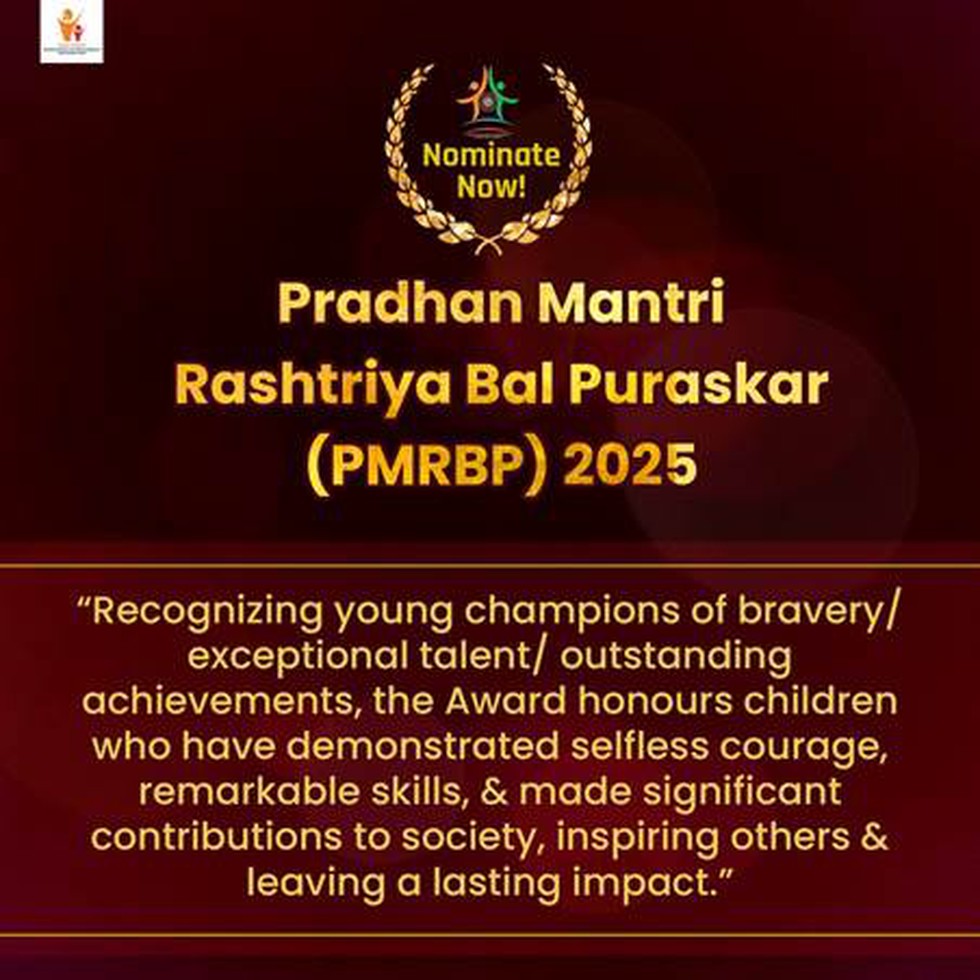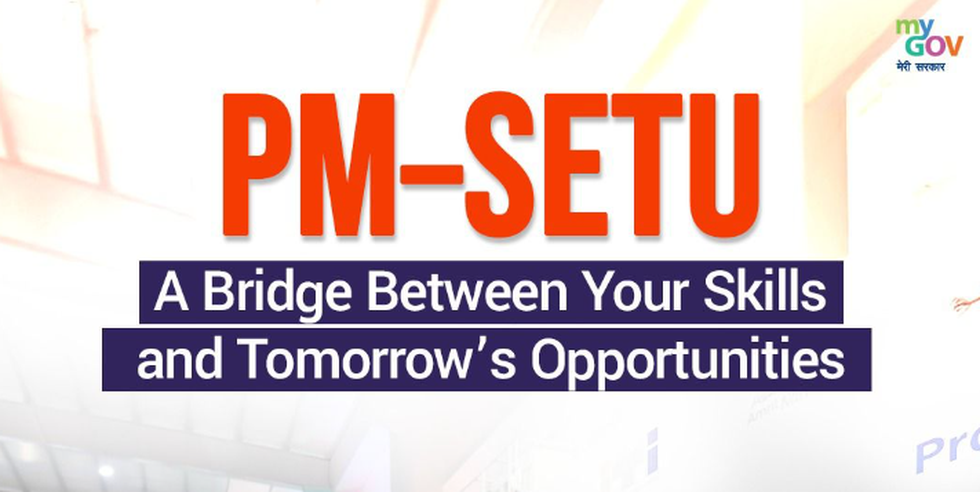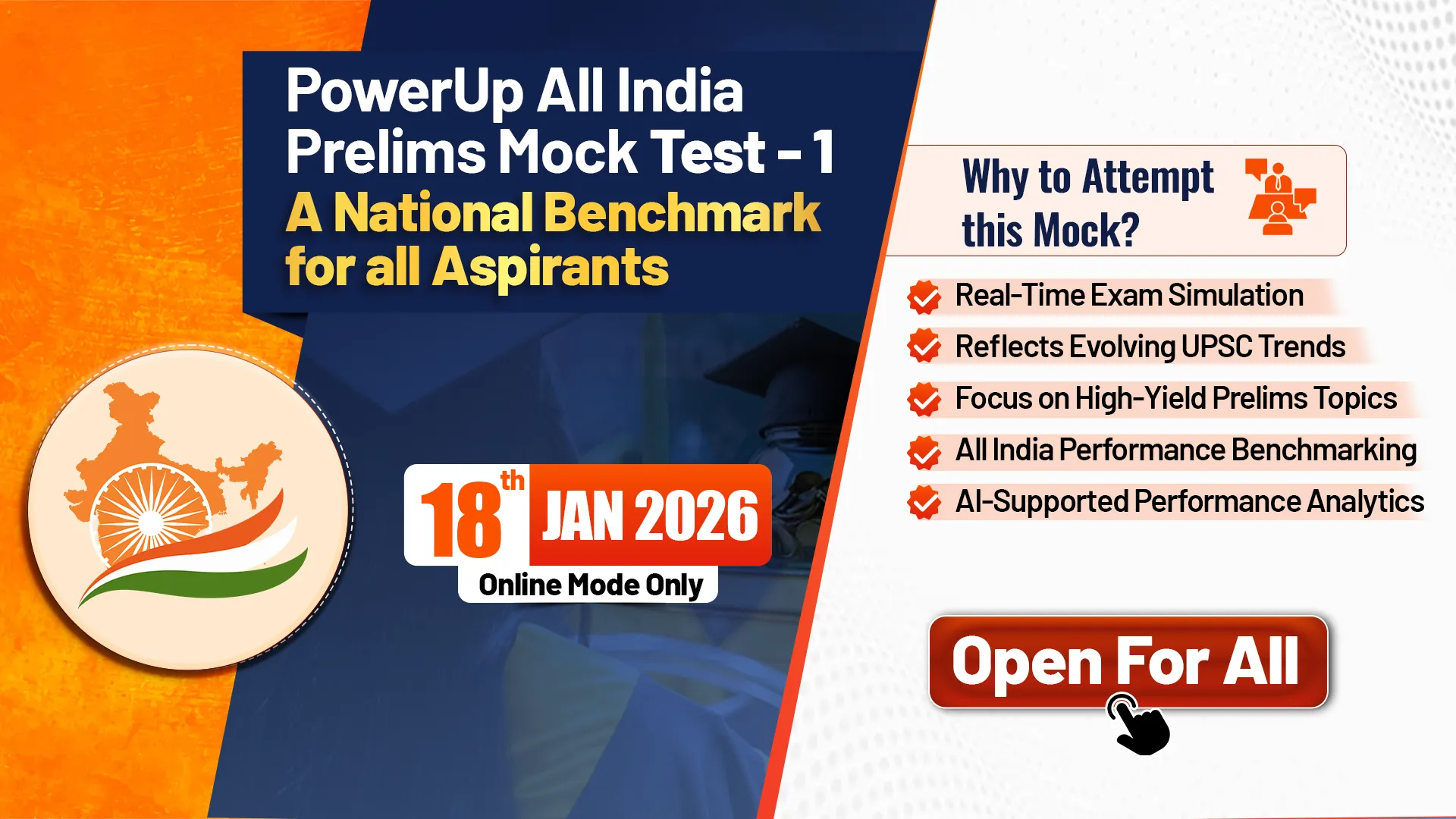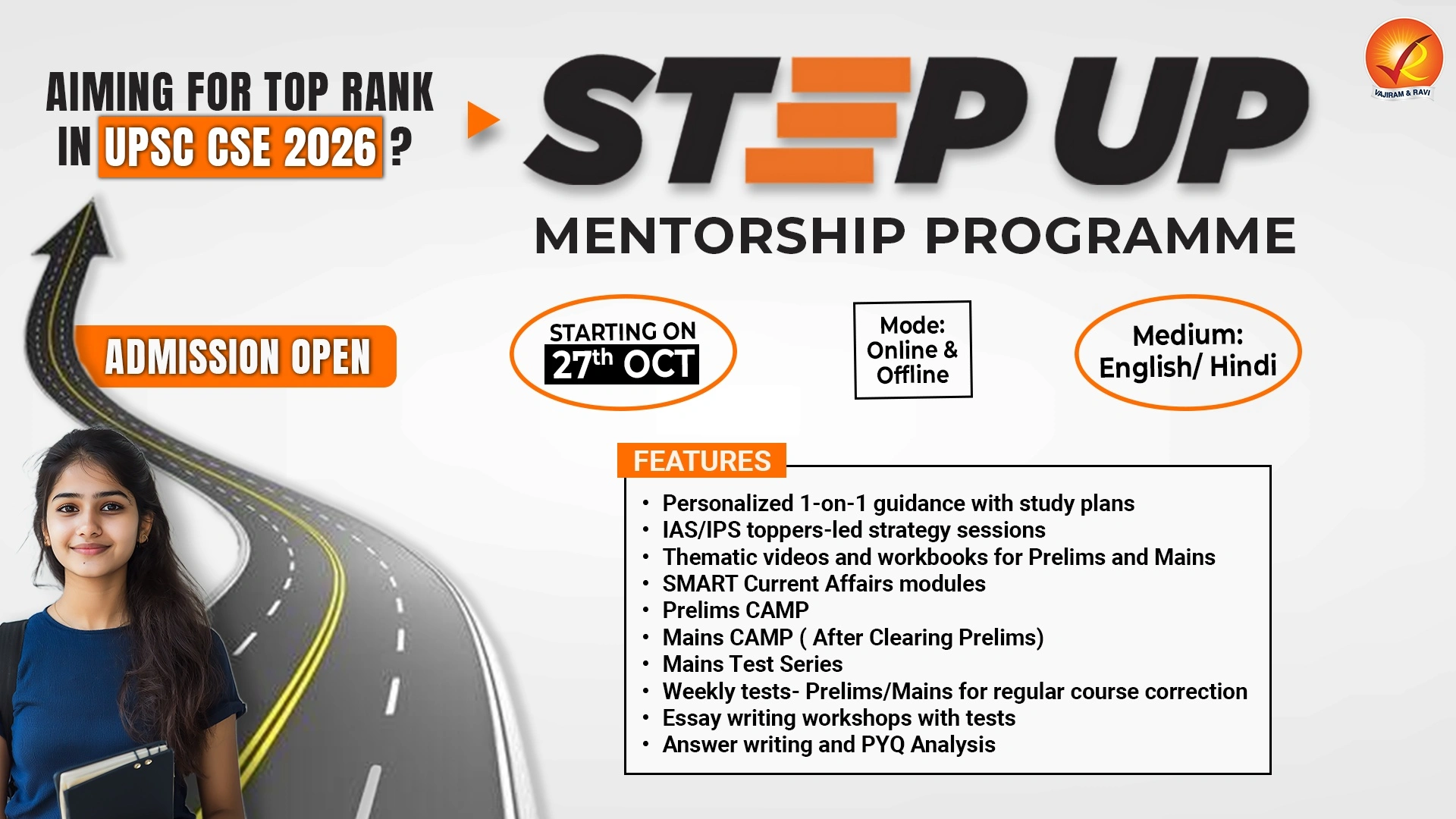Upcoming Mentoring Sessions
Learning Support Session - ANSWER writing MASTER Session
Learning Support Session - How to Read Newspaper?
Mastering Art of writing Ethics Answers
Mastering Art of Writing Social Issues Answers
Answer Review Session
RMS - Economy 11 - Infrastructure
RMS - Art & Culture 3
RMS - Polity 7 - Parliament 3
RMS - Geography - Indian Physiography - 2
RMS - Economy 10 - Agriculture
RMS - Polity 7 - Parliament 2
RMS - Geography - Indian Physiography
RMS - Polity 7 - Parliament 1
RMS -Economy 9 - Fundamentals of Indian Economy
RMS - Geography 5 - Major Landforms
RMS - Art & Culture 2
RMS - Geography 4 - Volcanoes, Volcanic Landforms and Rocks
RMS - Polity 6 - Judiciary 2
RMS - Economy 8 - Trade and Important Government Schemes
RMS - Geography 3 - Evolution of Oceans and Continents
RMS - Economy 7 - Inflation
RMS - Polity 6 - Judiciary 1
RMS - Geography 2 - Basic Concepts of Universe & Earth Interior
RMS - Art & Culture 1
RMS - Economy 6 - Balance of Payment
RMS - Geography 1 - Geomorphic Processes
RMS - Polity 5 - Constitutional & Non-Constitutional Bodies
Mentoring Session - UPSC Form Filling
RMS - Economy 5 - Financial Markets
RMS - Polity 4 - Fundamental Rights - P3
RMS - Economy 4 - Fiscal Policy and Budgeting
RMS - History 2 - From 1765 to 1858 - P2
RMS - Polity 4 - Fundamental Rights - P2
RMS - Economy 3 - Taxation
RMS - Polity 4 - Fundamental Rights-P1
RMS - History 1 - European Penetration to Battle of Buxar
RMS - Economy 2 - Money & Banking - P2
Mentoring Session (2024 - 25) - How to Write an ESSAY?
Social Issues Doubts and Mentoring Session
Ethics & Essay Doubts and Mentoring Session
Geography & Environment Doubts and Mentoring Session
History Doubts and Mentoring Session
Economy & Agriculture Doubts and Mentoring Session
Online Orientation Session
How to Read Newspaper and Make Notes?
Mains Support Programme 2025-(2)
Mains Support Programme 2025- (1)
Polity & International Relations Doubts and Mentoring Session
Mentoring Sessions (2024-25) - How to DO REVISION?
RMS - Polity - Parliament 3
Learning Support Session - How to Start Preparation?
RMS - Geography - World Mapping
RMS - Polity - Parliament 2
Prelims 2024 Strategy Session
RMS - Polity 3 - Union & its Territories and Citizenship
RMS - Geography - Major Landforms
RMS - Polity 2 - Preamble
RMS - Economy 2 - Money & Banking - P1
Mentoring Session (2024-25) - How to Make Notes?
RMS - Polity 1 - Constitution & its Salient Features
General Mentoring Session (GMS )
RMS - Modern History - Constitutional Developments - Important Acts in British India
Mentoring Session (2025-26) - How to write an Answer?
RMS - Economy 1 - Fundamentals of Economy and NIA
Current Affairs
Dec. 25, 2025
What is the K-4 Missile?
India tested an intermediate-range ballistic missile called K-4, which is designed to hit targets 3,500-km away, from the nuclear-powered submarine INS Arighaat in the Bay of Bengal recently.

About K-4 Missile:
- Kalam-4 or K-4 Missile, is a nuclear-capable intermediate-range submarine-launched ballistic missile (SLBM) designed mainly for deployment on Arihant-class submarines.
- Each Arihant-class submarine can carry four K-4 missiles.
- K-4 was indigenously developed by the Defence Research and Development Organisation (DRDO).
- Features:
- The missile has a two-stage solid-fuel system.
- It has a range of around 3,500 km.
- One of its key features is its ability to be cold-launched from underwater, which allows the missile to be ejected from the submarine before the engine ignites.
- It is guided by an advanced inertial navigation system supported by GPS and India’s NavIC system.
- This combination ensures high accuracy.
- The missile is also equipped with manoeuvring features that help it evade missile defence systems.
Science & Tech
Current Affairs
Dec. 25, 2025
Key Facts about Teesta River
An army jawan died after a raft capsized in the Teesta River during a training exercise in Sikkim’s Pakyong district recently.

About Teesta River:
- It is a major tributary of the Brahmaputra River and flows through India and Bangladesh.
- Course:
- It originates from the Tso Lhamo Lake in Sikkim.
- It then flows to the south, cutting a deep gorge through the Siwalik Hills east of Darjiling (in West Bengal, India).
- It turns southeast to run through the Sivok Khola pass onto the plains of West Bengal.
- It then enters Bangladesh, where it joins the Brahmaputra River (known as the Jamuna River in Bangladesh).
- It is glacier-fed, with sources like Pahurni Glacier, Khangse Glacier, and ChhoLhamo Lake contributing to its flow.
- Tributaries: Major tributaries include Lachung Chhu, Dik Chhu, and Rangpo Chhu on the left bank and the Rangit River on the right bank.
- Hydroelectric Projects and Barrages:
- In India:
- Teesta-V Dam,Sikkim.
- Teesta-III Dam, Sikkim.
- Teesta Low Dam III & IV, West Bengal.
- Gajoldoba Barrage, West Bengal.
- In Bangladesh:
- Duani Barrage
- Barakhata Teesta Barrage
- In India:
Geography
Current Affairs
Dec. 25, 2025
What is Primary Sclerosing Cholangitis (PSC)?
A new monoclonal antibody treatment has shown promising results for a rare liver disease called primary sclerosing cholangitis (PSC).

About Primary Sclerosing Cholangitis (PSC):
- It is a rare, long-term disease of the liver caused by inflammation of tubes in the liver called bile ducts.
- These ducts carry bile (a fluid that helps to digest fats) from the liver, where bile is produced, to the gallbladder, where it is stored, and to the small intestine, where it aids in digestion.
- Scarring and narrowing of bile ducts leads to liver damage.
- Over time, the liver loses its ability to filter blood and support digestion.
- People with PSC are at higher risk of liver failure and cancers of the bile ducts, gallbladder, and colon.
- Causes: It’s not entirely clear what causes PSC, but it appears to involve a combination of factors, including:
- Genetics
- Immune system problems
- Changes to the bacteria in your gut microbiome
- Environmental factors
- Symptoms:
- Itchy skin.
- Extreme tiredness (fatigue).
- Belly pain.
- Yellowing of the skin and eyes, called jaundice.
- Chills and fever from infection of bile ducts.
- Treatment:
- Care focuses on monitoring liver health and managing symptoms.
- Procedures can temporarily open blocked ducts, but liver transplant is the only cure for advanced disease.
Science & Tech
Current Affairs
Dec. 25, 2025
Bezymianny Volcano
The Bezymianny volcano that once blew itself apart in a massive explosion is now rising from the ashes—faster than scientists expected.

About Bezymianny Volcano:
- It is a cone-shaped stratovolcano on the Kamchatka Peninsula in the Russia.
Key Facts about Stratovolcano:
- It is a tall, steep, and cone-shaped type of volcano.
- Unlike flat shield volcanoes, they have higher peaks.
- They are typically found above subduction zones, and they are often part of large volcanically active regions, such as the Ring of Fire that frames much of the Pacific Ocean.
- Stratovolcanoes comprise the largest percentage of the Earth’s individual volcanoes, and most are characterized by eruptions of andesite and dacite, lavas that are cooler and more viscous than basalt.
- These more viscous lavas allow gas pressures to build up to high levels. Therefore, these volcanoes often suffer explosive eruptions.
- They are usually about half-half lava and pyroclastic material, and the layering of these products gives them their other common name of composite volcanoes.
- At the peak, stratovolcanoes usually have a small crater.
Geography
Current Affairs
Dec. 25, 2025
What is the Haka Dance?
A Sikh Nagar Kirtan or religious procession in South Auckland, New Zealand, was protested in the form of a traditional tribal “haka” dance recently.

About Haka Dance:
- It is a traditional dance of the indigenous Māori people of New Zealand.
- It is known for its powerful energy, fierce facial expressions (pukana), and physical movements like stamping, hand gestures, and chanting.
- Haka varies by tribal region, with many haka telling the story of significant events in a tribe’s history.
- Traditionally, the haka was performed for war, to celebrate achievements, or to welcome guests.
- Today, it is performed at important occasions like sporting events, weddings, and funerals.
- It symbolizes tribal pride, strength, and unity.
Art and Culture
Current Affairs
Dec. 25, 2025
Pradhan Mantri Rashtriya Bal Puraskar
President of India to confer the Pradhan Mantri Rashtriya Bal Puraskar (PMRBP) to children who have demonstrated outstanding achievements in diverse fields on 'Veer Bal Diwas'.

About Pradhan Mantri Rashtriya Bal Puraskar:
- It is a prestigious national honour conferred annually by the Government of India.
- It is awarded to children for exceptional excellence in Bravery, Art & Culture, Environment, Social Service, Science & Technology, and Sports.
- The Pradhan Mantri Rashtriya Bal Puraskar organized by the Ministry of Women and Child Development Government of India.
- Eligibility for Pradhan Mantri Rashtriya Bal Puraskar
- A child should be an Indian Citizen.
- Age: A child above the age of 5 years and not exceeding 18 years (as of 31st July of respective year).
- The act/incident/achievement should have been within 2 years of the last date of receipt of application/nomination for the year of consideration.
- The number of awards will be 25, however, any relaxation to this maximum number may be permitted at the discretion of the National Selection Committee.
- Each awardee will receive a medal, certificate and citation booklet.
Polity & Governance
Current Affairs
Dec. 25, 2025
PM-SETU Scheme
Recently, the Ministry of Skill Development and Entrepreneurship has invited industry leaders to participate in the PM-SETU scheme.

About PM-SETU Scheme:
- Pradhan Mantri Skilling and Employability Transformation through Upgraded ITIs (PM-SETU) is a Centrally Sponsored Scheme launched to strengthen India’s vocational training ecosystem.
- It aims to modernise the ITI ecosystem by upgrading 1000 government ITIs across India into modern, industry-aligned training institutions
- Implementation: It is implemented as a hub-and-spoke model.
- Each hub will be equipped with advanced infrastructure, innovation and incubation centres, production units, training of trainer facilities, and placement services, while the spokes will extend access and outreach.
- Nodal Ministry: Ministry of Skill Development and Entrepreneurship
- Components of PM-SETU Scheme:
- Introduce new, demand-driven courses and revamp existing ones in collaboration with industry;
- Special Purpose Vehicles: Set up Special Purpose Vehicles (SPVs) with credible Anchor Industry Partners to manage clusters and ensure outcome-based training;
- Create pathways for long-term diplomas, short-term courses, and executive programs;
- Strengthen 5 National Skill Training Institutes in – Bhubaneswar (Odisha), Chennai (Tamil Nadu), Hyderabad (Telangana), Kanpur (Uttar Pradesh), Ludhiana (Punjab), as Centres of Excellence with global partnerships.
- The initiative is backed by global co-financing from the World Bank and Asian Development Bank.
Economy
Current Affairs
Dec. 25, 2025
Long-billed Vulture
Recently, the Bombay Natural History Society (BNHS), along with the Maharashtra Forest Department, successfully carried out the tagging of 15 long-billed vultures at Melghat Tiger Reserve.

About Long-billed Vulture:
- It is an old World vulture native to the Asian region.
- They are also known as Indian long-billed vultures due to their comparatively longer beak.
- Appearance and Diet: It is a medium-sized and bulky scavenger feeding mostly on the carcasses of dead animals.
- Females of this species are smaller than males.
- Habitat: They are usually found in savannas and other open habitats around villages, cities, and near cultivated areas.
- Distribution: These are native to India, Pakistan, and Nepal.
- Conservation status
- IUCN Red List: Critically Endangered
Key Facts about Melghat Tiger Reserve
- Location: It is located in Maharashtra.
- Vegetation: The forest is tropical dry deciduous in nature, dominated by teak.
- Rivers: The reserve is a catchment area for five major rivers: the Khandu, Khapra, Sipna, Gadga, and Dolar, all of which are tributaries of the river Tapti.
- The Tapti River and the Gawilgadh ridge of the Satpura Rangefrom the boundaries of the reserve.
- Tribes: The Korkus are the largest tribal community in Melghat. Other communities include the Gawli community and the Gond tribe etc.
- Flora: Some of the common species are teak, Lagerstroemia Parviflora, Terminalia Tomentosa, Ougeinia Oojeinensis, Emblica Officinalis, Bamboo, etc.
- Fauna: It includes Sloth Bear, Indian Gaur, Sambar deer, Leopard, Nilgais, dhole, hyena, jungle cat, langur, etc.
Environment
Current Affairs
Dec. 25, 2025
Samudra Pratap
Recently, the Indian Coast Guard inducted the first in-built Pollution Control Vessel (PCV), Samudra Pratap under the 02 PCV project of Goa Shipyard Limited.

About Samudra Pratap:
- It is the first indigenously designed and built Pollution Control Vessel of the Indian Coast Guard.
- It is the largest ship in the ICG fleet, significantly enhancing the Coast Guard’s operational reach and capability.
- Features of Samudra Pratap:
- Armament: The vessel is equipped with state-of-the-art technology, including stabilised remote-controlled guns with integrated fire control systems.
- Advanced Systems: It consists of Integrated Bridge System, Integrated Platform Management System, Automated Power Management System, and a high-capacity external firefighting system.
- It is the first Indian Coast Guard ship to be equipped with Dynamic Positioning capability (DP-1), with FiFi-2 / FFV-2 notation certificate.
- It is equipped with advanced systems to detect oil spills.
- It is capable of high precision operations, recover pollutants from viscous oil, analyse contaminants, and separate oil from contaminated water.
Science & Tech
Current Affairs
Dec. 25, 2025
Thanjavur Painting
Recently, the Department of Posts successfully undertook the transmission of a priceless Thanjavur painting of the Shri Ram from Bengaluru to Ayodhya using its Logistics Post service.

About Thanjavur Painting:
- It is a classical South Indian art form originating in the town of Thanjavur (Tanjore), Tamil Nadu, around 1600 AD.
- Tanjore or Thanjavur paintings are created on wooden panels, commonly known as palagai padam.
- It was flourished under the Nayakas of Thanjavur.
- Features of Thanjavur Painting
- Tanjore paintings are traditionally created on canvas affixed to wooden planks, typically made from jackfruit or teak, and bound with Arabic gum.
- Rich Colors: These paintings are known for their vibrant colors. They often use bright shades of red, blue, green, and gold leafwork to create an opulent effect.
- Gesso Work: It is one of the unique features of Tanjore paintings is the use of gesso work. Gesso is a mixture of chalk, gypsum, and glue applied to the surface to create embossed patterns and motifs.
- Theme: Tanjore paintings typically depict Hindu gods and goddesses, especially figures like Lord Krishna, Lord Ganesha, and Goddess Lakshmi.
- Gold Leaf: Gold foil or leaf is extensively used in Tanjore paintings to embellish the artwork.
- It has received the Geographical Indication tag.
Art and Culture





































